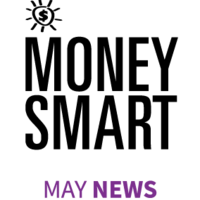
In This Issue
- Older Americans Month: Financial Education for Every Stage of Life
- Success Story
- Upcoming Money Smart Events
We welcome your submissions at ConsumerEducation@fdic.gov.
Older Americans Month: Financial Education for Every Stage of Life
This May, in recognition of Older Americans Month, we encourage organizations that deliver financial education to spotlight the importance of helping individuals build knowledge, confidence, and resilience at every stage of life.
The FDIC’s Money Smart program provides valuable tools for financial institutions, educators, and community organizations to support financial capability across all ages. Money Smart for Older Adults is an essential resource that covers key issues such as:
- Preventing scams and financial exploitation,
- Planning for unexpected life events, and
- Managing finances in retirement, including long-term care and housing options.
These lessons are relevant not only for older adults, but also for caregivers, families, and anyone navigating life’s financial transitions.
Whether you’re leading a workshop, teaching a class, or offering individual guidance, Money Smart for Older Adults is easy to use, flexible, and impactful.
Success Story
This month, we interviewed Money Smart Alliance member, Javier Sanchez, Financial Literacy Specialist for Fidelity Bank in Louisiana. Fidelity Bank is a community bank founded in 1908.
How does Fidelity Bank use the Money Smart curriculum?
“We use Money Smart as written but personalize it based on the audience—whether youth or seniors. We favor in-person workshops to better engage participants, especially in low- to moderate-income areas. I make sessions interactive by encouraging questions throughout instead of waiting until the end. I don’t just read slides—I meet people where they are. I use humor, walk around the room, and ensure everyone feels comfortable.”
How do you adapt your in-person workshops for different age groups?
“For seniors, we keep sessions concise—around an hour to an hour and a half—and sometimes bring donuts to boost participation. For younger groups, I make the content more interactive and game-like to maintain their interest. I developed a specialized Money Smart for Young People workshop focused on entrepreneurship, working with innovative students who were creating businesses ranging from jewelry making and baking to silk screening and printing. The goal was to teach basic business concepts like budgeting, pricing, and financial planning, while inspiring these young entrepreneurs to understand their business potential.”
What aspects of Money Smart do you find most impactful?
“The flexibility is key. I can hide slides, customize content, use real-life examples, and make it relevant to each group. The prompts also help manage time effectively, and open discussions make sessions dynamic. When we use pre- and post-tests, we consistently receive 5-star reviews.”
Share your Money Smart success story with us at ConsumerEducation@fdic.gov. We look forward to featuring it in a future edition of this newsletter.
Upcoming Money Smart Events
Join us on June 25 for a national webinar showcasing FDIC Money Smart Homeownership Resources. Click REGISTER and fill out the needed information. You will receive a confirmation email once completed.
For more consumer resources, visit FDIC.gov, or go to the FDIC Knowledge Center. You can also call the FDIC toll-free at 1-877-ASK-FDIC (1-877-275-3342). Please send your story ideas or comments to ConsumerEducation@fdic.gov. You can subscribe to this and other free FDIC publications to keep informed!
